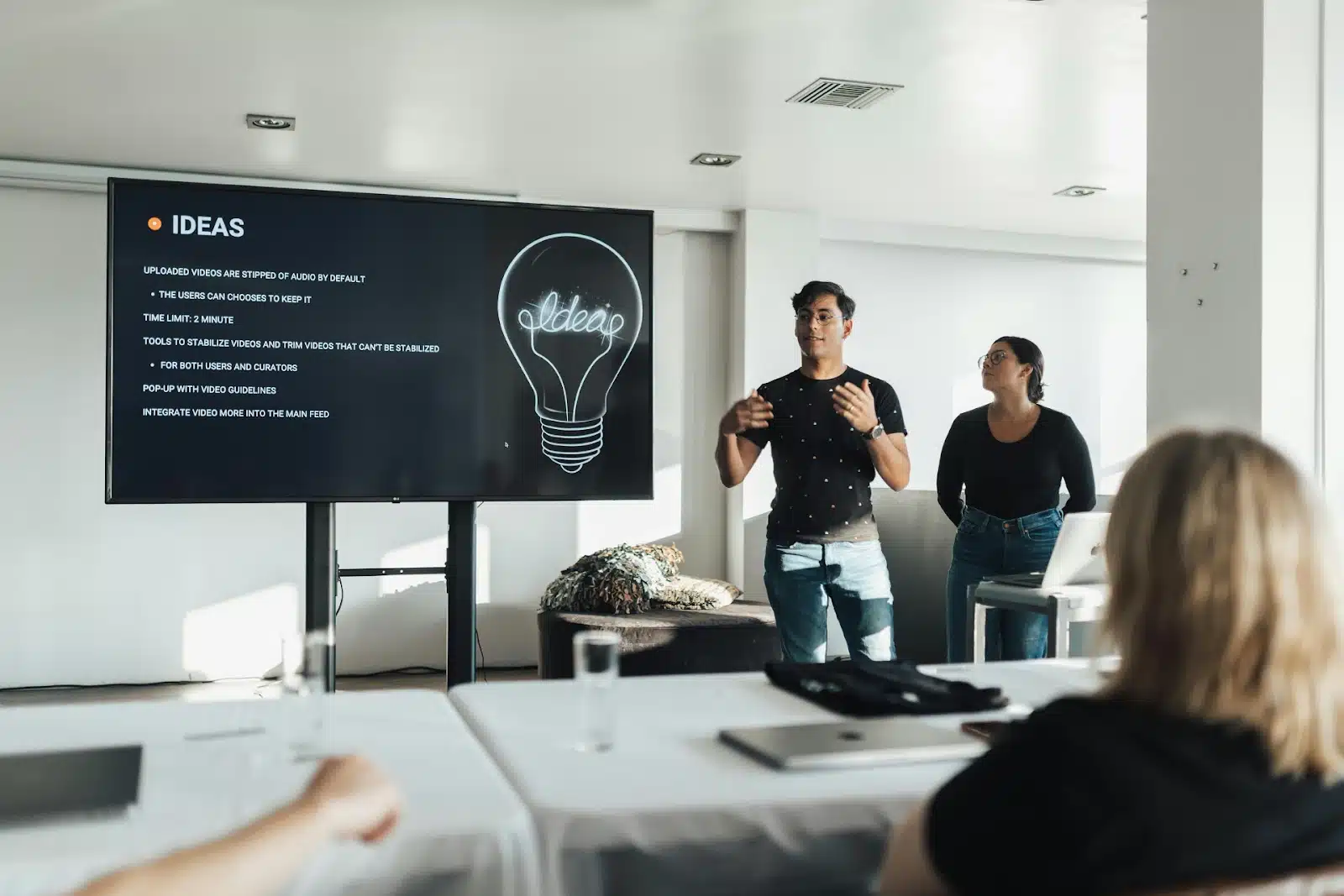
Build a Speaking Outline That Guides Dialogue and Sparks Interaction
Creating a speaking outline that fosters dialogue and encourages audience interaction is essential for effective presentations. In today’s fast-paced world, where attention spans are short and engagement is crucial, presenters must adapt their methods to ensure that their messages resonate. A well-structured outline not only helps in organizing thoughts but also serves as a roadmap for facilitating meaningful conversations with the audience. This article delves into the key components of an effective speaking outline and how to leverage them to create an interactive presentation experience.
Understanding the Importance of a Speaking Outline
A speaking outline acts as a framework that guides presenters through their material while allowing flexibility to engage with the audience. It ensures that key points are communicated clearly and that the presenter remains focused on the objectives of the presentation. Moreover, an outline helps in anticipating audience questions and reactions, enabling presenters to prepare for interactive elements.
Incorporating a speaking outline into presentations can significantly enhance audience engagement. By structuring the content in a way that invites questions and discussions, presenters can transform a one-way communication style into a dynamic dialogue. This shift is particularly important in virtual settings, where maintaining audience attention can be challenging. Engaging the audience not only keeps their interest but also fosters a sense of community and shared learning, making the presentation more memorable and impactful.
Key Components of an Effective Speaking Outline
To create a speaking outline that promotes interaction, several key components should be included:
- Introduction: Begin with a captivating opening that sets the tone for the presentation. This could be a thought-provoking question or a relatable anecdote that resonates with the audience.
- Objectives: Clearly outline the goals of the presentation. What do you want the audience to learn or take away? This helps in aligning the discussion with audience expectations.
- Main Points: Organize the core content into digestible sections. Each point should be concise and relevant, allowing room for audience interaction. Consider using bullet points for clarity.
- Engagement Opportunities: Identify specific moments within the presentation where audience participation is encouraged. This could include asking for opinions, conducting polls, or inviting questions.
- Conclusion: Summarize the key takeaways and provide a call to action. Encourage the audience to reflect on what they have learned and how they can apply it.
Utilizing Technology to Enhance Interaction
Incorporating technology into presentations can significantly enhance audience engagement. Platforms like PresEngage offer innovative solutions that transform traditional presentations into interactive experiences. By utilizing AI-powered Q&A and SMS participation, presenters can seamlessly connect with their audience, allowing for real-time feedback and engagement.
For instance, with PresEngage, audience members can ask questions via text message without the need for apps or logins. This frictionless participation encourages even the most reserved individuals to contribute, fostering a more inclusive environment. Furthermore, the platform captures audience questions and contact information, enabling presenters to follow up effectively after the event. This capability not only enhances the immediate interaction but also builds a bridge for future communication, ensuring that the dialogue continues beyond the presentation itself.
Additionally, leveraging multimedia elements such as videos, infographics, and live demonstrations can further enrich the experience. These tools not only illustrate key points more vividly but also cater to various learning styles within the audience. By integrating these elements into the speaking outline, presenters can create a more immersive environment that captivates and retains attention, making the overall presentation more effective and enjoyable.
Crafting Engaging Content
The content of a presentation is crucial in determining its effectiveness. Engaging content not only captures attention but also encourages audience interaction. Here are some strategies for crafting content that resonates:
Storytelling Techniques
Storytelling is a powerful tool in presentations. By weaving narratives into the content, presenters can create emotional connections with their audience. Stories can illustrate key points, making them more relatable and memorable. For example, sharing a personal experience related to the topic can humanize the presenter and invite audience members to share their own stories. Additionally, incorporating elements such as conflict and resolution within these narratives can further enhance engagement, as audiences are naturally drawn to stories that evoke curiosity and empathy. By framing the presentation around a central story arc, presenters can maintain a cohesive theme that keeps the audience invested from beginning to end.
Interactive Elements
Integrating interactive elements throughout the presentation can significantly enhance engagement. This could include live polls, quizzes, or breakout discussions. By actively involving the audience, presenters can gauge their understanding and adapt the content accordingly. Tools like PresEngage facilitate these interactions by allowing real-time feedback and participation. Furthermore, incorporating small group discussions or partner activities can foster a sense of community among attendees, encouraging them to share insights and perspectives that may not emerge in a larger setting. This collaborative approach not only enriches the learning experience but also empowers participants to take ownership of the content being presented.
Visual Aids and Multimedia
Visual aids play a vital role in enhancing presentations. Utilizing slides, videos, and infographics can help convey complex information in a digestible format. Moreover, visuals can serve as conversation starters, prompting audience questions and discussions. When creating visual content, it’s essential to ensure that it complements the spoken message rather than overwhelming it. For instance, using high-quality images and concise bullet points can reinforce key messages without distracting from the presenter’s narrative. Additionally, incorporating animations or transitions can help guide the audience’s focus, emphasizing important concepts as they are introduced. By thoughtfully designing visual elements, presenters can create a more immersive experience that captivates and retains audience attention throughout the presentation.
Encouraging Audience Participation
Encouraging audience participation is key to transforming a presentation into an interactive dialogue. Here are some effective strategies to foster engagement:
Open-Ended Questions
Asking open-ended questions throughout the presentation invites audience members to share their thoughts and experiences. Instead of posing questions that can be answered with a simple “yes” or “no,” presenters should encourage deeper discussions. For example, asking, “What challenges have you faced in implementing this strategy?” can lead to richer conversations. This approach not only stimulates critical thinking but also allows the presenter to gain insights into the audience’s perspectives, which can be invaluable for tailoring the content to meet their needs. Furthermore, it can create a more dynamic atmosphere where participants feel empowered to voice their opinions, leading to a more memorable and impactful experience for everyone involved.
Incorporating Feedback Loops
Creating opportunities for feedback during the presentation helps presenters gauge audience understanding and adjust their delivery. This can be achieved through quick polls or by asking questions at specific intervals. By acknowledging audience input, presenters demonstrate that their contributions are valued, fostering a sense of community. Additionally, utilizing technology such as live polling apps can enhance this process, allowing for real-time feedback that can be visually represented. This not only makes the audience feel more involved but also provides instant data that can be referenced during the presentation, making the discussion more relevant and engaging.
Utilizing Breakout Sessions
For larger audiences, breakout sessions can be an effective way to facilitate interaction. Dividing participants into smaller groups allows for more intimate discussions and encourages everyone to contribute. Presenters can provide guiding questions or topics for discussion, ensuring that the conversations remain focused and productive. Moreover, these sessions can be structured to include a report-back segment where each group shares their insights with the larger audience. This not only reinforces the learning experience but also allows for diverse viewpoints to be heard, enriching the overall dialogue. By fostering collaboration in smaller settings, presenters can help participants build connections with one another, enhancing the networking potential of the event.
Measuring Engagement and Effectiveness
After the presentation, it’s crucial to measure engagement and effectiveness to improve future presentations. Here are some methods to assess the impact:

Analytics and Feedback
Utilizing analytics tools can provide valuable insights into audience engagement. PresEngage offers detailed metrics on participation levels, question volume, and audience demographics. This data can help presenters understand which aspects of their presentation resonated most with the audience and where improvements can be made. Furthermore, analyzing engagement trends over time can reveal patterns that might indicate the best times to present certain topics or the most effective formats for delivering information. By continuously monitoring these metrics, presenters can adapt their strategies to align with audience preferences, ensuring that each presentation is more impactful than the last.
Post-Presentation Surveys
Conducting post-presentation surveys is another effective way to gather feedback. Surveys can include questions about the content, delivery, and overall engagement. This feedback can be instrumental in refining future presentations and ensuring that they meet audience needs. Additionally, including open-ended questions allows participants to share their thoughts in their own words, providing deeper insights into their experiences. Analyzing this qualitative data can uncover unexpected strengths and weaknesses in the presentation, guiding the presenter toward more innovative approaches and content adjustments that truly resonate with their audience.
Follow-Up Communication
Following up with audience members after the presentation can reinforce key messages and maintain engagement. Personalized emails or messages can provide additional resources, answer lingering questions, and invite further discussions. This not only enhances the presenter’s credibility but also fosters lasting connections with the audience. Moreover, incorporating a call-to-action in these communications can encourage participants to engage further, whether that means signing up for a newsletter, joining a related community, or participating in future events. By nurturing these relationships, presenters can create a loyal audience base that is more likely to attend future presentations and advocate for their work.
Transforming Presentations Into Conversations That Connect
Building a speaking outline that guides dialogue and sparks interaction is essential for creating impactful presentations. By understanding the importance of an outline, crafting engaging content, encouraging audience participation, and measuring effectiveness, presenters can transform their delivery from a one-way communication style into a dynamic conversation.
Incorporating technology, such as AI-powered engagement platforms, can further enhance the interactive experience, ensuring that every audience member feels involved and valued. Ultimately, the goal is to create presentations that not only inform but also inspire action and foster meaningful connections.
For professionals like Jamie, the dream outcome is a presentation where every audience member is engaged, every question is answered, and every opportunity to connect or close a deal is captured. With tools like PresEngage, achieving this goal becomes not only possible but also effortless.
Take Your Presentations to the Next Level with PresEngage
Ready to revolutionize your presentations and captivate your audience like never before? With PresEngage, you can harness the power of AI-driven SMS Q&A to create a seamless, interactive experience that keeps your audience engaged and ensures no question goes unanswered. Whether you’re a presenter, educator, trainer, or business professional, PresEngage is designed to help you effortlessly connect, answer, and convert your audience’s attention into tangible results. Say goodbye to the barriers of traditional Q&A sessions and embrace a world of possibilities with our unique, CRM-integrated platform. Start for FREE today and transform your speaking outline into an engaging, high-conversion conversation with PresEngage.
Present Smarter. Engage Answer Convert Close Remarkably.
Dazzle your audience with Real-Time Q&A powered by your AI Co-Presenter.(Patent Pending)
PresEngage™ makes you look brilliant by connecting with everyone, instantly.
No Credit Card Required. 100% Risk Free.
Frictionless Audience Experience GUARANTEED.






